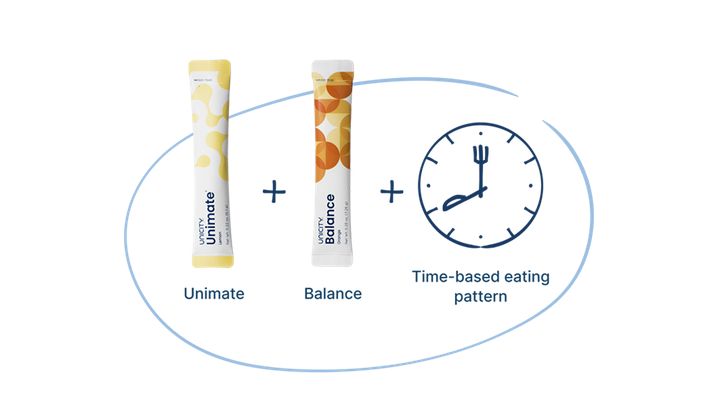Different Types of Fasting Schedules for Your Natural Weight Loss Enhancement
Fasting has become a popular method for boosting weight loss, enhancing metabolic health, and improving overall well-being. Whether you're looking for a more structured eating pattern or simply want to jumpstart your weight loss journey, fasting can be an effective tool when done correctly. Not all fasting schedules are the same, and finding the one that fits your lifestyle and goals is crucial. Let’s explore the different types of fasting schedules that can naturally support your weight loss efforts.
1. Intermittent Fasting (16:8)
The 16:8 method is one of the most popular and manageable intermittent fasting schedules. This approach involves fasting for 16 hours and limiting your eating window to 8 hours each day. During the fasting period, you can consume water, black coffee, or tea, but solid foods and caloric drinks are off-limits.
Why It Works for Weight Loss:
By narrowing the eating window, you naturally reduce your calorie intake, and fasting for extended periods forces your body to burn stored fat for energy. It also helps regulate insulin levels, which can prevent fat storage and support metabolic health.
How to Try It:
You might skip breakfast and have your first meal at noon, then finish eating by 8 PM. This pattern is flexible and can be adjusted to fit your lifestyle.
2. The 5:2 Diet
The 5:2 fasting method involves eating normally five days of the week and significantly reducing calorie intake on the other two days. On fasting days, women typically consume around 500 calories, and men consume 600 calories.
Why It Works for Weight Loss:
On fasting days, you put your body into a calorie deficit, which can promote fat burning without feeling deprived every day of the week. This method can be easier to maintain long-term than daily fasting schedules.
How to Try It:
Choose two non-consecutive fasting days, such as Monday and Thursday, and consume minimal calories on those days. On the other five days, eat normally but focus on healthy, whole foods to optimize results.
3. Alternate Day Fasting
Alternate Day Fasting (ADF) involves alternating between days of fasting and eating normally. On fasting days, you either abstain from food completely or significantly reduce your calorie intake, consuming around 500 calories. On non-fasting days, there are no specific restrictions.
Why It Works for Weight Loss:
ADF helps create a significant calorie deficit over the week, which can accelerate weight loss. It also promotes fat oxidation and may improve insulin sensitivity, which helps your body use energy more efficiently.
How to Try It:
Fast every other day. On fasting days, you can either avoid food altogether or eat a very small meal, usually around 500 calories. On non-fasting days, eat as usual, but be mindful not to overcompensate with extra calories.
4. Eat-Stop-Eat
Eat-Stop-Eat involves fasting for 24 hours once or twice a week. The idea is to go a full day without food and then resume normal eating habits the following day. It’s a simple and flexible fasting method that can be adjusted based on your schedule.
Why It Works for Weight Loss:
Fasting for 24 hours puts your body into a deep state of fat burning as it exhausts its glycogen stores and turns to fat for energy. This method can help reduce overall calorie intake for the week without daily fasting.
How to Try It:
Pick one or two days a week to fast for 24 hours. For example, if you finish dinner at 7 PM, you wouldn’t eat again until 7 PM the next day. During the fasting period, stick to water, black coffee, or tea.
5. The Warrior Diet (20:4)
The Warrior Diet is a more extreme version of intermittent fasting where you fast for 20 hours and eat all your calories in a 4-hour window. The idea behind this fasting schedule is to eat small amounts of raw fruits and vegetables during the day and then consume a large, nutrient-dense meal in the evening.
Why It Works for Weight Loss:
By limiting your eating window to just 4 hours, you naturally eat fewer calories, while fasting for 20 hours maximizes fat burning. It also helps regulate hunger hormones, making you less likely to overeat.
How to Try It:
Fast for 20 hours by consuming small amounts of fruits, vegetables, or protein if necessary. Then, have one large meal in the evening, ensuring that it's balanced with protein, healthy fats, and fiber-rich vegetables to keep you full and nourished.
6. Spontaneous Meal Skipping
If you prefer a more relaxed approach, spontaneous meal skipping might be the perfect fasting method for you. This involves skipping meals whenever you feel like it, based on your natural hunger cues and daily routine. Unlike structured fasting schedules, this method allows for more flexibility.
Why It Works for Weight Loss:
By occasionally skipping meals, you can easily reduce your calorie intake without feeling like you’re on a strict schedule. This method works because you’re listening to your body’s hunger signals and eating when truly necessary.
How to Try It:
Skip meals whenever you’re not hungry or too busy to eat. For example, if you’re not hungry in the morning, skip breakfast and wait until lunch. Just make sure that when you do eat, you choose nutrient-rich foods.
7. OMAD (One Meal a Day)
OMAD, or One Meal a Day, is a form of intermittent fasting where you consume all your daily calories in a single meal. This fasting schedule usually involves fasting for 23 hours and eating one large meal within a 1-hour window. OMAD is a more intense form of fasting, so it’s typically recommended for more experienced fasters.
Why It Works for Weight Loss:
OMAD drastically reduces calorie intake and forces your body to rely on fat stores for energy throughout the day. By eating just one large meal, you may consume fewer calories overall, which can lead to rapid weight loss.
How to Try It:
Fast for 23 hours, then eat one large, satisfying meal within a one-hour window. Ensure that your meal contains plenty of protein, healthy fats, and fiber to keep you full and provide all the essential nutrients your body needs.
Conclusion
Fasting can be a powerful tool for natural weight loss enhancement, but it’s important to choose the schedule that fits your lifestyle and health goals. Whether you opt for a more structured plan like 16:8 or alternate day fasting, or something flexible like spontaneous meal skipping, the key is consistency and balance. Listen to your body, stay hydrated, and focus on nourishing your body with nutrient-dense foods when you do eat. By incorporating a fasting schedule that works for you, you can naturally enhance your weight loss efforts while supporting your overall metabolic health.
Jessica Brown
Researcher
“By narrowing the eating window, you naturally reduce your calorie intake, and fasting for extended periods forces your body to burn stored fat for energy."
"It also helps regulate insulin levels, which can prevent fat storage and support metabolic health."
Subscribe to Get Tips on Losing Weight Fast!
Contact Us
We will get back to you as soon as possible.
Please try again later.
Opening hours
- Monday
- -
- Tue - Fri
- -
- Sat - Sun
- -
Corporate Office
1018 Edgewood Rd MD 21040
info@nwloss.com
410-417-8411






